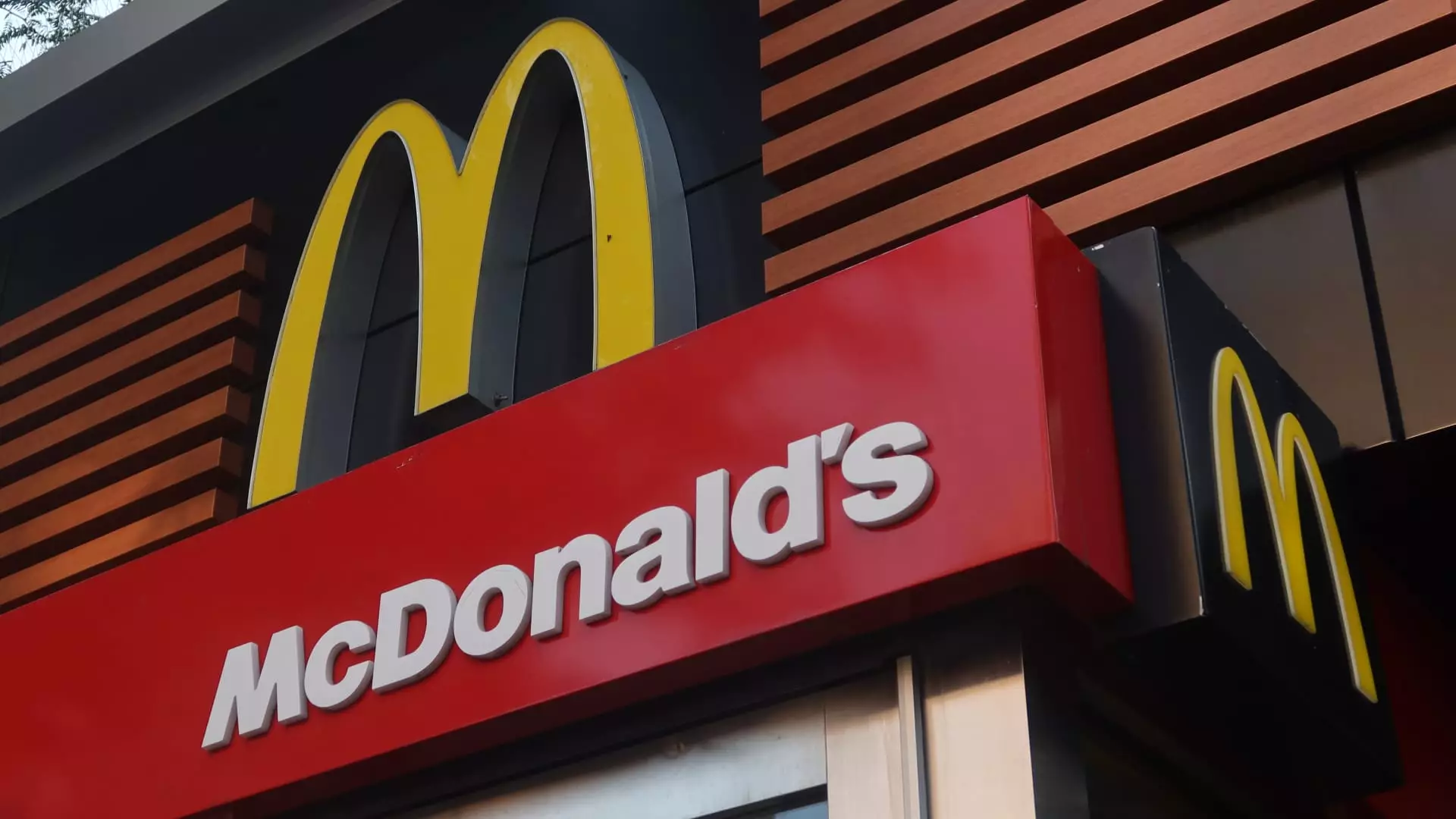While McDonald’s proudly reports a quarter that exceeds Wall Street expectations, the shimmering surface conceals underlying vulnerabilities rooted in economic fragility among its core clientele. The company’s robust earnings figures—more than $6.8 billion in revenue and a 5% increase—are undeniable indicators of resilience. Yet these numbers mask a troubling truth: the fundamental health of the American low-income demographic is deteriorating, and no marketing gimmick or promotional blitz can mask that reality for long. Their recent success is less a triumph of enduring customer loyalty and more a temporary bounce driven by short-term promotions and strategic brand tie-ins, such as the Minecraft-themed meal and return of Snack Wraps. Such factors underscore a broader systemic issue—McDonald’s current “growth” narrative depends heavily on superficial tactics rather than genuine economic vitality among its most loyal consumers.
The Hidden Crisis: Low-Income Consumers and the Chain’s Fragile Foundation
The confidence displayed by McDonald’s executives about future growth is built on shaky ground. CEO Chris Kempczinski admits that the low-income consumer, a significant segment of McDonald’s customer base, “visits our restaurants more frequently than middle- and high-income consumers,” but also emphasizes their declining spending habits. The double-digit drop in visits among low-income Americans signals a brewing crisis. While McDonald’s can temporarily boost sales through promotional meals and limited-time offers, these measures are band-aids—temporary fixes in the face of a long-term decline in consumer purchasing power. The company’s cautious outlook for the near-term market health underscores a critical recognition: as economic inequality grows and consumer budgets tighten, the core customer base is becoming more elusive. This realization challenges the narrative of steady growth and highlights an uncomfortable truth—the chain’s resilience is largely superficial, dependent on tactical promotions that cannot substitute for fundamental economic recovery.
The Illusion of Market Share and International Outperformance
Internationally, McDonald’s appears to be holding its ground with healthy growth figures—5.6% in comparable sales across key markets like Japan and China, and respectable gains in the UK, Australia, and Canada. However, this veneer of international strength reveals a different kind of vulnerability. The company’s statement about less competitive international markets hints at an important nuance: in many overseas territories, McDonald’s is fighting for relevance rather than dominance. The notion that “good value” and affordability improve in these markets might be true on paper, but it also exposes the simplistic assumption that global markets remain immune to the economic pressures that squeeze American consumers. McDonald’s international growth is partly a result of less saturated and more receptive markets, not necessarily a sign of genuine global resilience. The global fast-food giant’s overreliance on a few markets for expansion can be perilous should economic conditions deteriorate elsewhere.
The Problem with Promoting Perception over Substance
McDonald’s strategy hinges on leveraging promotional campaigns—as seen with the return of the Snack Wraps and special tie-ins—to generate consumer interest. While such tactics can temporarily lure customers, they risk cultivating a fragile brand loyalty based on discounts rather than quality or value. Moreover, these campaigns tend to ignore the deeper societal issues at play—particularly, the stagnation of wages and the erosion of disposable income among low-income Americans. This disconnect suggests a troubling focus on short-term sales metrics over sustainable growth rooted in authentic consumer empowerment. If McDonald’s relies too heavily on these superficial boosts, it risks alienating its core demographic further, accelerating a decline that no promotional stunt can arrest.
A Flawed Strategy in a Divided Economy
In the larger scheme, McDonald’s is pressed between a rock and a hard place. Its attempt to double down on affordability and value could inadvertently reinforce its reputation as a budget brand, which may erode its appeal among middle-income consumers seeking quality and experience. Meanwhile, the chain’s optimism about stronger future results in the face of economic hardship hinges on a questionable premise—that promotional activity and international expansion can compensate for domestic economic challenges. If recent history teaches anything, it’s that superficial efforts cannot address the root cause of declining consumer spending: income stagnation and widening inequality. Without addressing these fundamental issues, McDonald’s risk becoming an emblem not of resilient growth but of superficial posturing—a façade that may crumble as consumer economic realities worsen.

